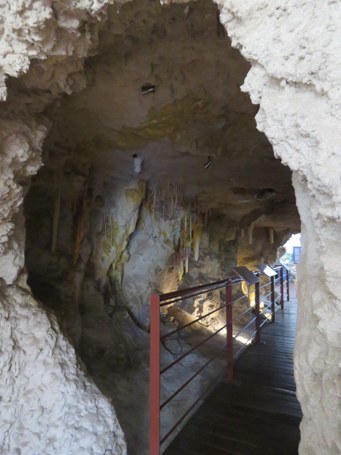Australia So Much to See


Caves of the Augusta Margaret River area - The Lake Cave in 2020
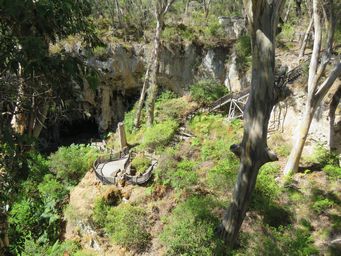
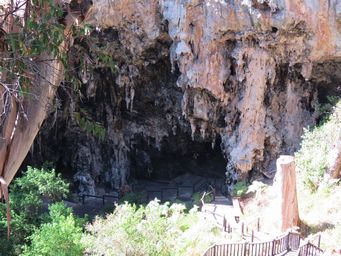
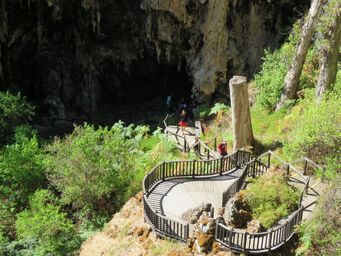
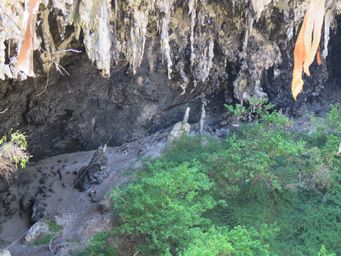
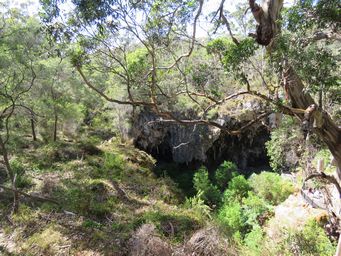
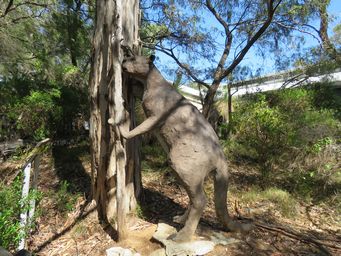
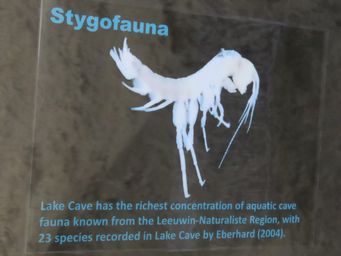
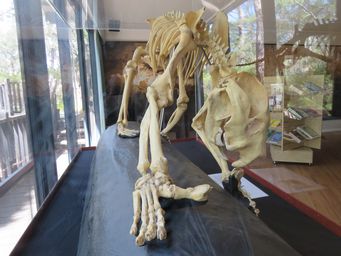
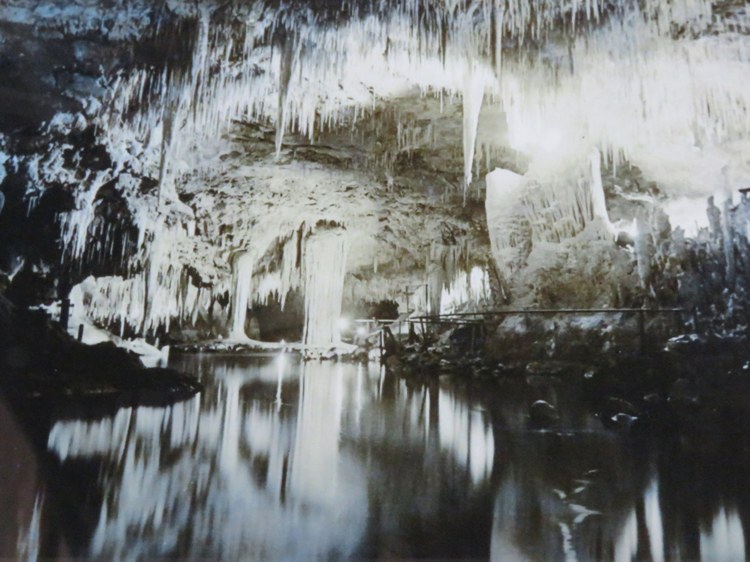
The Lake Cave and the Cave Works information centre is nineteen kilometres south of Margaret River, along Caves Road. It is
on the west side of the road, and shares the same access road initially as Conto’s campground.
Although considered a permanent
lake, as with other caves in the area the water table is dropping, and the water is drying. There was little water remaining in this
reflective lake cave, especially after the dry summer months. With 325 mostly steep steps down into this massive sink hole,
there is a viewing platform, and an information centre with displays and information boards about caves, where Karri trees are growing
from the floor of the sinkhole. With our knees refusing to take all those steps, we viewed from the top only, so we did not
get to see any reflections in remnant water in the lake inside the cavern.
Megafauna
Caves have been very useful sources of animal fossils, as animals can fall through small openings and become trapped. The Mammoth Cave in the Leeuwin-Naturaliste karst has proved to be a rich source of these fossils.
Simonsthenurus occidentalis
was a short faced Kangaroo. This species was first discovered at Mammoth Cave. It was a leaf eating Kangaroo with large
skull and long powerful arms for reaching branched above its head. It also has a very strong tail, and only a single toe on
each foot. These extinct Kangaroos were much heavier and more robust than a Western Grey Kangaroo.
The information centre includes a walk through mock-up of a cave with a reflective lake (at right), and a tunnel a small person can
crawl through to envisage what it is like for cave explorers. There are artefacts on display, and information boards including
about past and present fauna in caves in the region.
Stygofauna
Stygofauna are any fauna that live in groundwater systems or aquifers, such as caves, fissures and vugs (rock cavities). Stygofauna and troglofauna are the two types of subterranean fauna. Both are associated with subterranean environments. Stygofauna are associated with water and troglofauna with caves and spaces above the water table.
Lake Cave has the richest concentration of aquatic cave fauna known in the Leewin-Naturaliste region with 23 species recorded.
Hundreds of bones of Zygomaturus tribolus were found in the Mammoth Cave. Zygomaturus was a marsupial about the size of a cow,
weighing about one tonne.
Scientists believe that both Zygomatutus and Diprotodon had a common ancestor about 1.5 million
years ago, with Zygomatutus living on the humid south west of the state, and Diprotodon in the drier central regions.
Thylacoleo
carnifex was discovered in New South Wales and in Western Australia, including the Mammoth Cave and Devils Lair. Thylacoleo
was probably more like marsupial leopard than a lion. It was about 1.5 metres long and estimated to weigh 75 - 100 kilograms. Its body structure and long claws indicate a tree climber.
Two species of wombat ancestors have been found in fossil caves. The giant Phascolonis gigas, and the smaller Vombatus hirsuta.
Thylacine cynocephalus, the Tasmanian Tiger, which became extinct as recently as 1936, was once widespread over much of Australia. Remains have been found in caves in the north and south of Western Australia. A well preserved Thylacine was discovered in the
dry salty conditions of a Nullarbor cave, and has been dated as from 4,500 years ago. Aboriginal rock paintings show a striped
dog-like animal indicating their knowledge of this now extinct animal.
The extinction of the Thylacine on the mainland
may have been due to the arrival of the Dingo (around 5,000 year ago) being too competitive as well as having a faster breeding rate. Without Dingoes, the Thylacine existed in Tasmania until more recent times (1936).
Fossil remains of what may be the ancestor
of the Western Grey Kangaroo, Macropus fulginosis, have been found in the Mammoth Cave and near Balladonia.
Mammoth Cave
deposits yielded remains of three species of Echidna, two of which are extinct. Zoglossus hacketii whose bones were found, is
the largest known monotreme. It would have been about one metre long and weighed around thirty kilograms.
There
is little direct evidence to prove that Aboriginals were present at the same time as the giant mammals. Bones of an extinct
large Kangaroo which were found in the Mammoth Cave show evidence of being in a fire and are broken in a way that suggests humans
may have been responsible.
